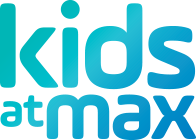
Children love to be be motivated! Reward charts are helpful to encourage a child to reduce undesirable behaviours and to encourage more positive and appropriate desirable behaviours.
Rewards chart can help in the following ways:
- Teaches children a sense of responsibility of their own actions / behaviours
- Gives children a sense of achievement and recognition for their efforts
- Teaches children that if they can be rewarded too by showing more positive behaviours, their tendency to exhibit negative behaviours may reduce
- Allows parents to track their children’s’ behaviours objectively
- Teaches children that a reward can be in many forms
- Encourages parent-child interactions
Here are 10 tips for using reward charts:
- Select target behaviours
- Keep the list short to begin with (e.g. 2 to 4 target behaviours)
- Ensure that the target behaviours are not too hard or too easy to achieve (i.e. you want to set them up for success!)
- Describe the behaviours
- They need to be clear, specific and achievable
- State the behaviours in a positive way. For example, use “speaking politely“ instead of “no shouting” or “keeping your hands and legs to yourself” instead of “no kicking or hitting”.
- Set a goal for the number of tokens (i.e. stamps, stickers or ticks) your child must earn before receiving a reward
- Aim for an easy goal first to encourage success
- Start with daily (small) rewards. You may want to have 2 reward times (e.g. 1 at midday and 1 at the end of the day)
- Make the goal harder to achieve later. Explain to your child that there will be a new system to encourage more positive behaviours.
- Decide on small and big rewards and what is reasonable
- Understand that the rewards need to be motivating
- Think about a good and balanced incentive
- Some small rewards can be lucky dip, choosing what to have for dinner, or extra screen time
- Effective rewards do not need to be expensive
- Invite your child to participate
- Select a chart that they like (e.g. superhero theme). There are many reward charts that can be purchased online. You may even want to make one with your child
- Decide on stickers, stamps or ticks
- They may even help to set up some rewards
- Explain the chart to your child thoroughly
- Ensure they understand what behaviours earn the tokens
- Ensure they know how often they can earn the tokens and the reward
- Explain what happens if they do not meet their daily goal (i.e. they can try again tomorrow)
- Follow through with the rules
- Be consistent
- You need to keep ‘catching’ your child displaying target behaviours (sometimes they might not even know that they are doing it!)
- Always reward when your child displayed good behaviour (even if they displayed undesirable behaviour after or before)
- Try to reward with a token straight after your child displays target behaviours
- Reward only target behaviours
- Praise your child each time they earn a token
- Only certain people can provide the tokens (i.e. parents only)
- Never deduct the tokens rewarded / earned
- Do not criticise if your child did not achieve the goal
- Encourage your child to try again
- When your child is reaching their goals daily, extend the time required for them to achieve the reward
- For example, only rewarding every second day then weekly.
- Gradually phase out the chart and make rewards less predictable
- Continue to reward your child once in a while for displaying positive behaviours and provide ongoing praise and encouragement for positive behaviours.
If you have concerns with your child’s behaviour and would like further assistance, please contact Kids At Max on (03) 9702 4447 to schedule a session with a Psychologist today.
Written by Kids At Max – Psychologist
